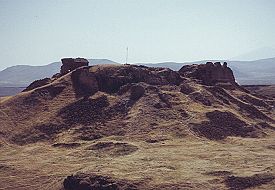
1. The citadel hill seen from the Minuchir mosque
At the southern end of Ani the ground rises up to form a flat-topped hill. This part of Ani is known as the "Inner Fortress" (Midjnaberd in Armenian), or simply as the "citadel". As well as having natural defences of steep cliffs on three sides, the citadel was encircled by a single line of ramparts. This wall had towers on its north facing section, and an entrance gateway at its north-western corner.
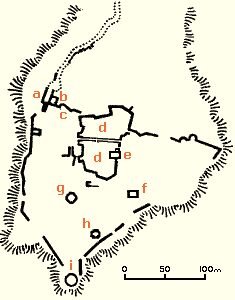
The citadel ramparts are presumed to date, in part, from the time that the Kamsarakan dynasty ruled Ani (the seventh century AD), but additional work was done on them until the thirteenth century.
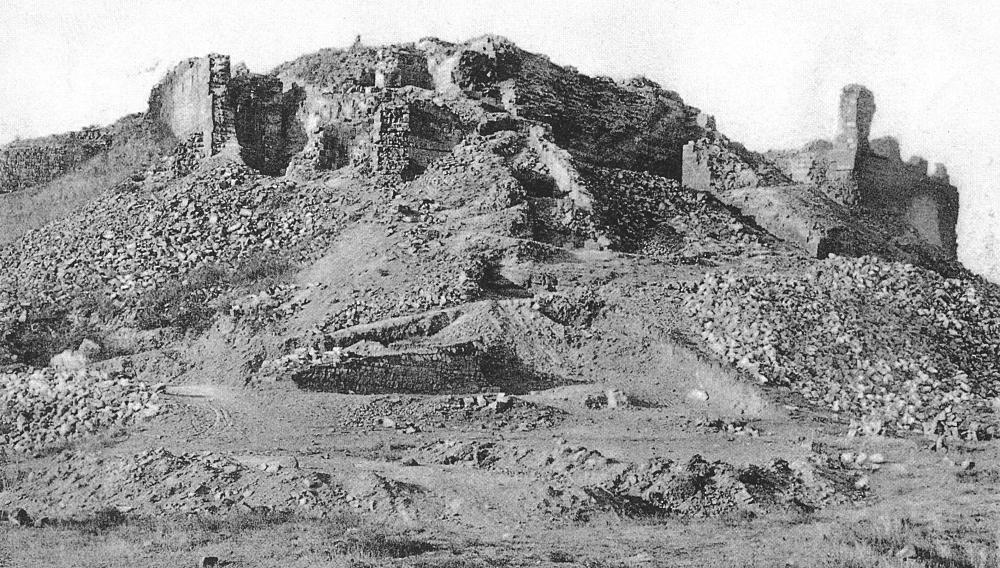
2. The citadel hill photographed during Nikolai Marr's excavations
The entrance to the citadel, at [a] on the plan, was constructed at the time of the Sheddadid rulers of Ani (1072-1199) according to Nikolai Marr, and was joined to older walls. This gateway has a ramp up to it, paved with large slabs of stone. Underneath the gateway, but above the original ground level, Marr discovered the clay pipes of a conduit that had delivered water into the citadel. This water had come from a spring situated nearly eleven kilometres from the city. The citadel has no natural water supply.
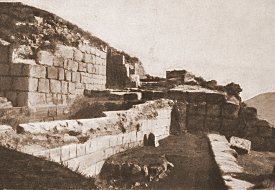
3. The citadel gateway [a] after its excavation
The rectangular tower [b] that flanks the gateway on the left is built from reused masonry: large stone blocks of black basalt. There are hollows cut into the ends of these blocks, revealing that they originally were part of a structure built using the masonry technique where large blocks of stone are held together by iron "dove-tail" cramps set in lead. In Armenia, this method of construction is found in buildings from the Arsacid period (the first to the fourth century AD). These stone blocks may have been taken from parts of the Zoroastrian "fire temple", or from another building of the same or an earlier period. Very little of this stone is reused in other parts of the citadel, suggesting that the stone was brought to the citadel from another location, and the fire temple is the most obvious site.
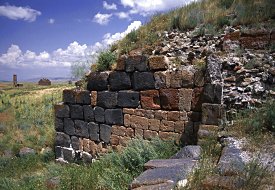
4. The gateway [a] and the rectangular tower [b]
To the left of the rectangular tower is a stretch of the citadel wall [c] whose masonry facing seems to be surprisingly fresh in appearance (see photograph 6). This is probably an unrecorded reconstruction from the time of Marr's excavations.
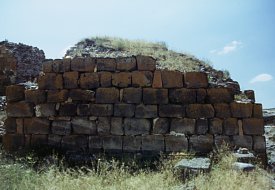
5. The rectangular tower is built from re-used stone
In 1907, on the slopes of the citadel, fragments of a Greek inscription were found. It had probably fallen from the citadel, and must have dated from the brief period of Byzantine rule at Ani. Basmadjian mentions finding, in 1903, a fragment of a Greek inscription in the citadel - perhaps the same inscription.
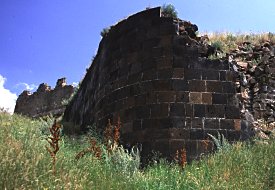
6. The probably reconstructed section of wall at [c]
Within the citadel ramparts are the extensive ruins of a palace [d] that occupied the highest part of the citadel hill, the ruins of at least five churches [e, f, g, h, i], and the ruins of several unidentified buildings. Today, there are the visible remains of three churches within the citadel: the "Church of the Palace" [e] , the "Mausoleum of the Child Princes" [f], and the "Hexagonal Church of the Citadel" [i].
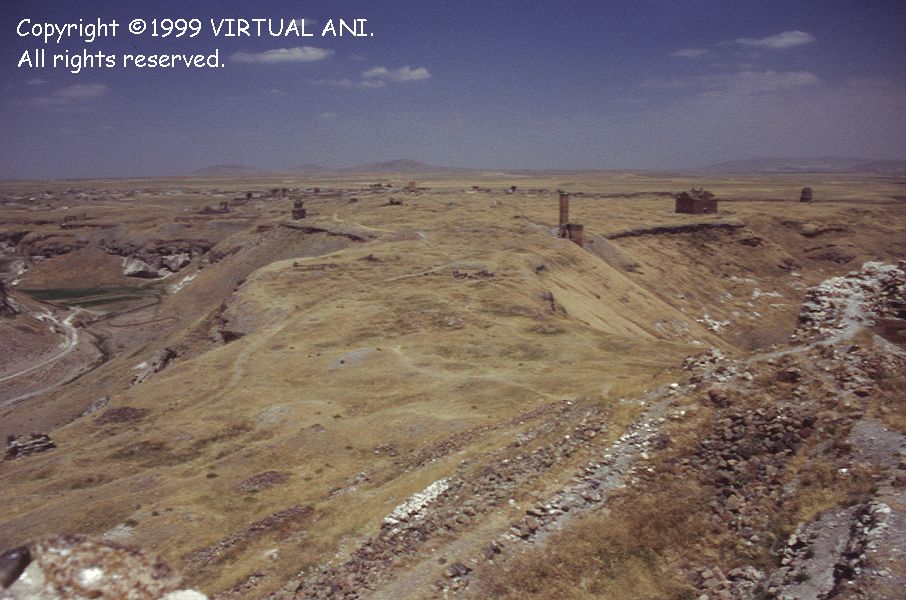
7. A panoramic view of the city can be experienced from the citadel palace






















